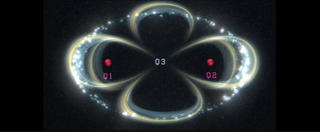Silicon-based Quantum Computing Reaches Accuracy Milestone
Three separate teams worldwide published the feat on Nature - all on the same day.

Three separate teams of researchers worldwide have demonstrated more life to silicon-based quantum computing than previously expected. In independent experiments, the teams showcased quantum architectures operating above the 99 percent accuracy threshold - the requirement for fault-tolerant computing and a crucial milestone for the utility of quantum systems.
Hailing from Australia, the Netherlands, and Japan, all three teams demonstrated above 99 percent accuracy for one and two-qubit operations – the simplest quantum matrixes. Their approaches differ, however. The Delft University of Technology, Netherlands, and the RIKEN Institute, Japan teams operated silicon quantum-dot-based systems. The University of New South Wales, Australia team created their three-qubit system by pairing an electron to their system of two phosphorus nuclei via ion implantation into the silicon - one of the fundamental processes for making traditional microchips.
Due to their differing approaches, the teams achieved different accuracy levels. The Australian squad demonstrated 99.95 percent accuracy with one-qubit operations and 99.37 percent for two-qubit operations in a three-qubit system. The Netherlands team, led by physicist Seigo, achieved 99.87 percent accuracy for one-qubit operations and 99.65 percent for two-qubit operations in quantum dots. And finally, Japan’s team: led by physicist Akito Noiri of RIKEN, achieved 99.84 percent accuracy for one-qubit operations and 99.51 percent for two-qubit operations, also in quantum dots.
Quantum computers use quantum analogs to the basic unit of information binary bit. Qubits are unique because they can exist in superposition states, holding the information corresponding to 0, 1, and both zero and one simultaneously. It allows quantum computers to perform calculations based on probabilities. Quantum computers are more prone to errors than deterministic computing systems.
“When the errors are so rare, it becomes possible to detect them and correct them when they occur. This shows that it is possible to build quantum computers that have enough scale, and enough power, to handle meaningful computation,” explains physicist Andrea Morello, leader of the Australia research team. So it now becomes an issue of scale.
It was the first time that the researchers achieved such levels of accuracy in silicon-based quantum computing. Many consider silicon-based quantum computing as the poor, distant cousin of more exotic approaches to the world of quantum processing, such as topological superconductors, trapped-ions, and photonics-based quantum architectures. However, it has just one-upped the competition.
“The presented result makes spin qubits, for the first time, competitive against superconducting circuits and ion traps in terms of universal quantum control performance,” said Seigo Tarucha, leader of the Netherlands team. “This study demonstrates that silicon quantum computers are promising candidates, along with superconductivity and ion traps, for research and development toward the realization of large-scale quantum computers.”
Stay On the Cutting Edge: Get the Tom's Hardware Newsletter
Join the experts who read Tom's Hardware for the inside track on enthusiast PC tech news — and have for over 25 years. We'll send breaking news and in-depth reviews of CPUs, GPUs, AI, maker hardware and more straight to your inbox.
It seems that quantum computing research has achieved the boiling point. Enough talented engineers, physicists, and scientists are now devoting their work to the technology in such a way that parallel achievements are being unlocked—a turning point, for sure - and a bright future for quantum.

Francisco Pires is a freelance news writer for Tom's Hardware with a soft side for quantum computing.
Most Popular


